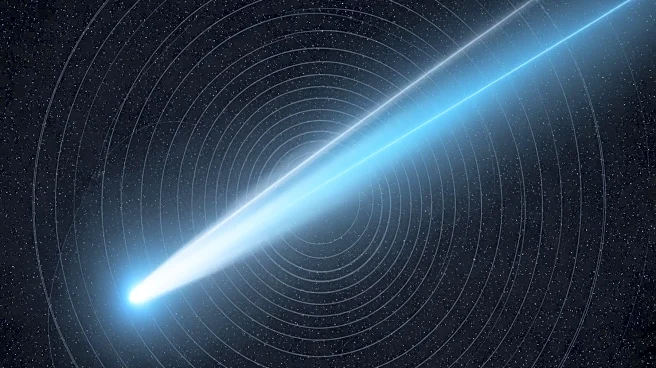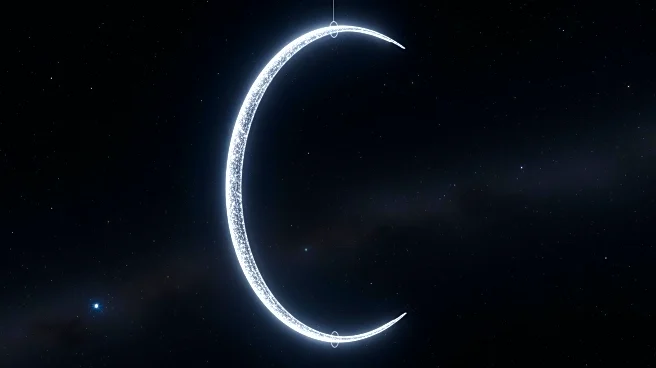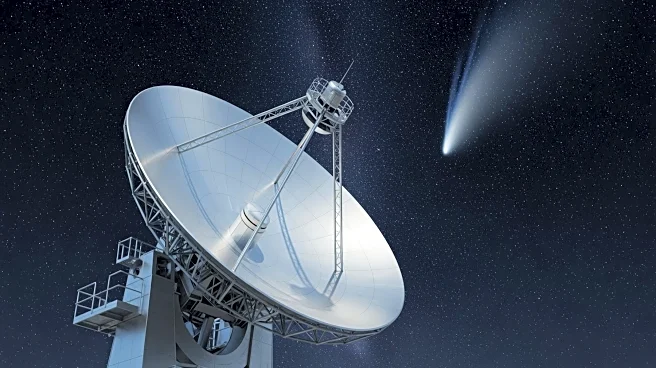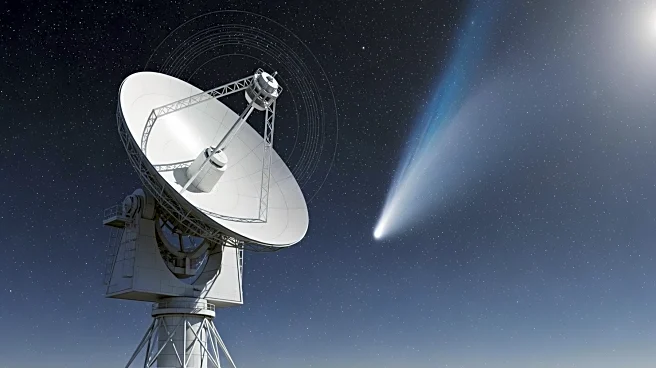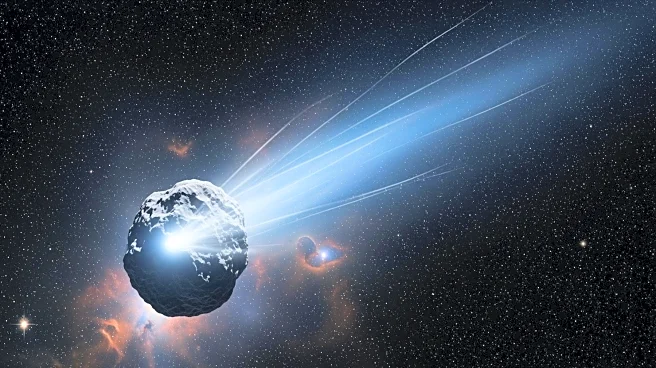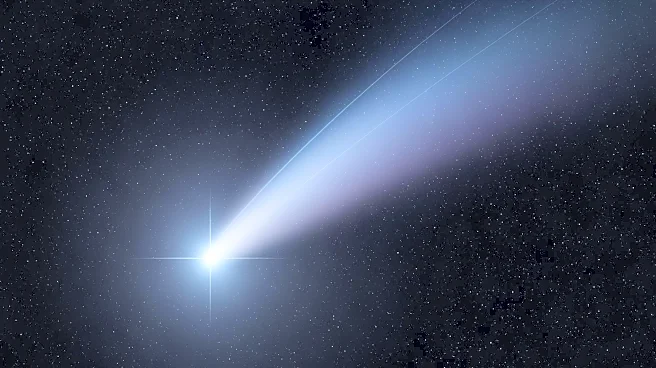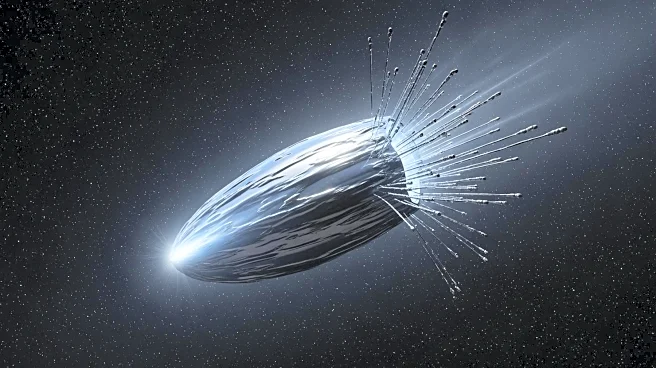What's Happening?
The interstellar comet 3I/ATLAS is displaying a lengthening ion tail and has produced its first radio signal, confirming its natural cometary nature. The comet's tail is visible in the predawn sky, and astronomers
have detected hydroxyl absorption, indicating water activity. The comet is currently visible in Virgo, requiring telescopes for observation.
Why It's Important?
Interstellar comets like 3I/ATLAS provide insights into the composition and behavior of celestial objects from other planetary systems. The detection of water activity supports the comet's natural origin, dispelling speculation about extraterrestrial technology. Observations of 3I/ATLAS contribute to understanding the formation and evolution of comets across the galaxy.
What's Next?
ESA's JUICE spacecraft is conducting coordinated observations of 3I/ATLAS, with data expected in early 2026. The comet will continue to be monitored by various space missions and amateur astronomers, providing valuable data on its behavior and composition. The comet's closest approach to Earth will occur on December 19, 2025.
Beyond the Headlines
The study of interstellar comets like 3I/ATLAS enhances our understanding of the diversity of celestial objects and their potential for harboring life. The comet's behavior and composition offer clues about the conditions in other planetary systems, contributing to the broader search for life beyond Earth.
